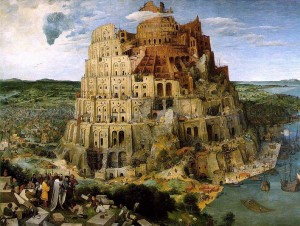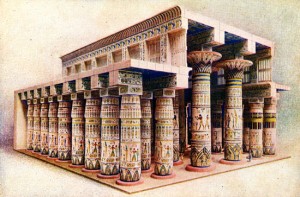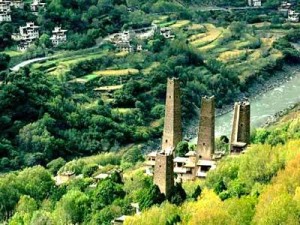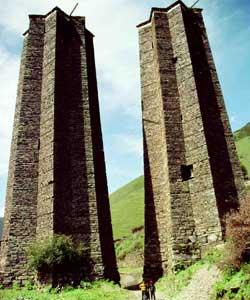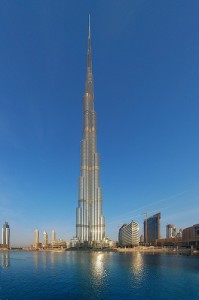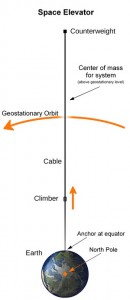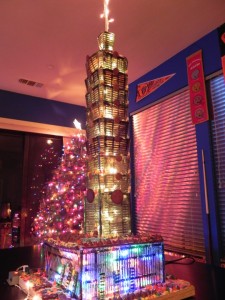Tower design essay.
It’s really cool to me, the design of the tower, and I’m not the only one who thinks so. Architecturally speaking, towers require more materials and effort than a simple low structure, and are therefore usually less efficient when you begin to exceed a certain height. But still, the tower persists as a form.
Mostly the very early tower has only offered itself as a defensive structure, to keep things safe, or as a lookout, but slowly it made its way into other parts of human activity too, including religion. It must be something about trying to reach the heavens that make them so endearing to people, and of course there are the power issues associated with it. Here’s a shot of one of the many paintings based on the story in the Bible where the “tower of Babel” appears. One of my favorite towers….
It still blows me away that people actually strive to build these impractical buildings with seriousness, and it’s a tribute to their staying power deep in the psyche of human consciousness that they do. Is it because they are hard to make? and let you show off your skills as a culture/individual? Or was Freud was just onto something 😛
In my opinion all towers derive from a design of a simple column, which most likely in itself was designed as a “tied bundle of sticks”. The “first Architect” (imho) Imhotep, conceived of the column as just that! A bundle of reeds from the Nile, and in fact all Greek classical design of “fluting” comes from this simple design choice made once in antiquity. The funny thing is that it IS stronger. Giving an upright structural element some “ribbing” to makes it more able to deal with movement and flex (a big hurdle when dealing with designing long lasting monumental structures)
Take a look at these towers now. The stone towers of china. some are over 1000 years old.
http://www.unicornfoundation.org/page/english/inthenews.asp
These are great example of what works and what doesn’t in the world of towers, a veritable test bed of tower design, and a great example of the use of buttressing (the better “architectural term” for ribbing described earlier). All are masonry towers that include some of the most important structural discoveries there are (I won’t list them), and all the towers you see now are the ones that survived the elements, time, and all the other nasty things nature has to offer. These then are literally the fittest survivors of a tower design/construction natural selection process. It has been so long that all the weak towers have fallen to earthquakes, war etc…and if you look closely you can notice that all the survivors have some things in common. They almost always have some form of ridges or buttressing in the wall, or are stellar in plan, and both those attributes contribute greatly to the structural strength (see? a “bundle of sticks”). They also all taper towards the top (called “battered” when referring to a wall); this is also a strong design element to consider when designing a column, they want to taper, not only does it look stronger, but it simply is. So in the end, what you end up with is a bunch of smaller columns leaning inwards towards one another! A perfect column.
With today’s super structures, towers are once again all the rage, and we are lucky enough around to see the tallest building/structure ever built blast the competition out of the water. Let’s take a look; we can see some of the same forms for a good column, but changed. One of the major changes is scale, which has been increase by a couple orders of magnitude. So have all the components that makes the “column”, they are also enlarged. The Burj Khalifa @ Dubai will stand 2723 feet (830m)!! and holds 17 world records!.
Can you see the bundles? Can you see the taper?, Stellar plan form…. its all there. what is built here is the result of 1000’s of years of trial and error in tower design.
One might imagine what’s next? Who knows?….its assumed right now that the Burj Khalifa will hold the records for tallest building and tallest man-made structure for a very long time…but lets speculate…what is next?….. How about this:
http://en.wikipedia.org/wiki/Space_elevator
The Space elevator. Does this count? In my opinion it does, but in order to complete its programed design criteria it must take on a whole new form. In fact, it kind of doesn’t really conform to the whole previous essay on the tower at all, but that’s what makes it good. What do I mean? All other towers resist gravity through vertical load transference through the structure to the ground. The space elevator on the other hand will most likely consist of a huge ribbon of super strong material that will allow an elevator to climb up the structure into space. The weight of the structure would be so great, that you could not support it from the bottom, so it must be kept upright with a counter weight “flying away from gravity” to basically keep the ribbon taught.
The counter weight then, spinning way out from the center of the earth to get the centripetal force, will require an anchor on the face of the Earth to keep the whole super form from flying into space, another difference, and instead of resisting sinking, the foundation will resist pulling, AND finally instead of tapering towards the top, it must get larger and heavier to add to the counter weight!
And I think that’s the biggest tower one can get. Look at the picture! The ribbon itself is longer than the earth by a few lengths!!
But can one think of anything else? If one defines the tower as a structure that reaches for the heavens does having a “space ring” count? That’s all I could think of that would be “beyond” the space elevator tower design… Anyway, have fun. And don’t forget those tower defense games!
Lastly. here is an image of our sugar tower Christmas ginger bread house.

